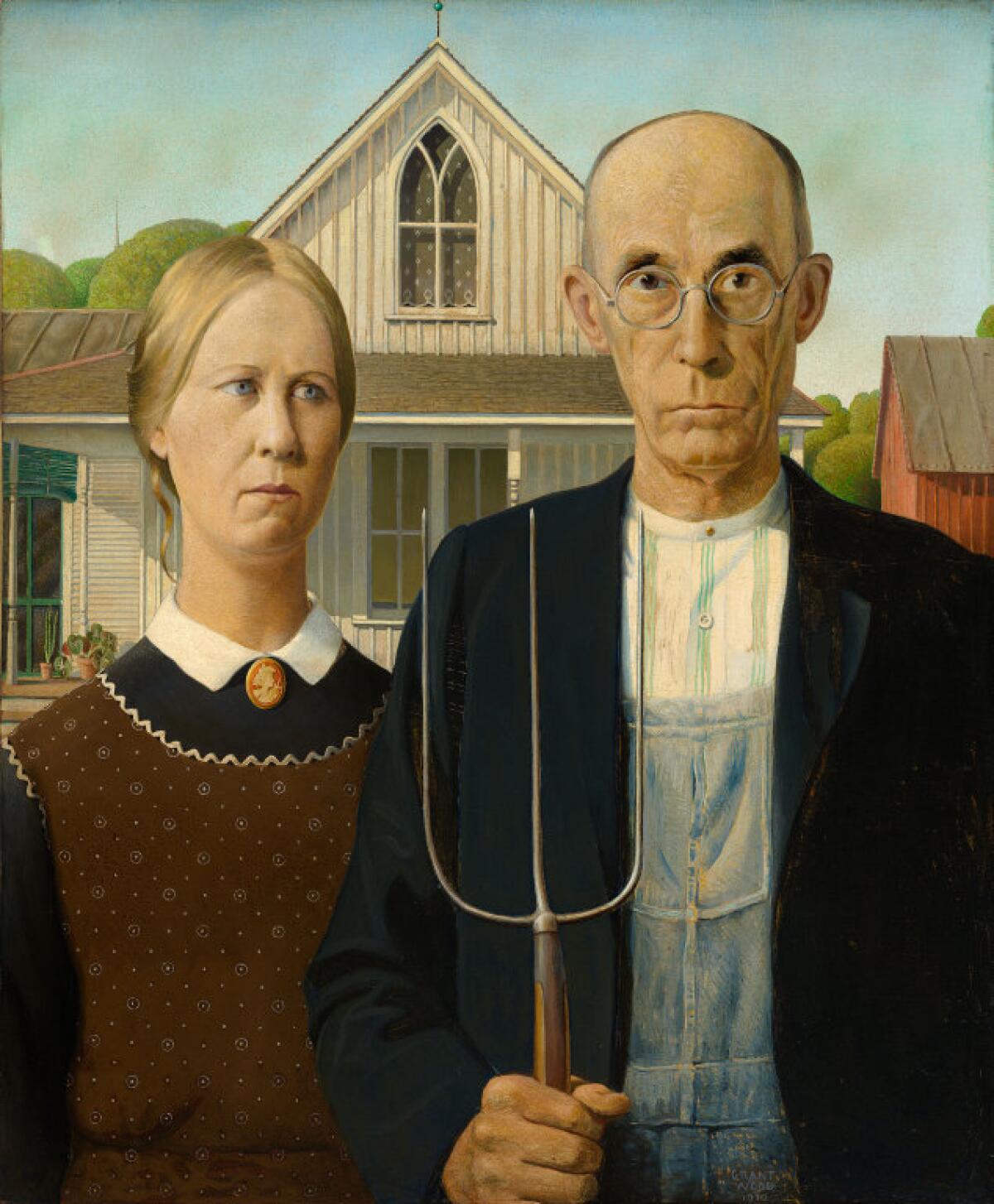This woman’s goal: Revitalizing Iowa’s ‘American Gothic’ town
- Share via
ELDON, Iowa — Tiny Eldon in southeast Iowa has been losing population, jobs and business for nearly five decades, but one woman is trying to turn things around with a focus on tourism centered around the community’s famous landmark — the house that served as the backdrop for Grant Wood’s “American Gothic” painting.
Donna Jeffrey, 70, has lived in Eldon her entire life. She is leading a nonprofit that seeks to reinvigorate the town by giving visitors a reason to spend more time and money there, the Des Moines Register reported.
“The town just seemed so desolate,” said Jeffrey. “It’s bad for people who have grown up in Eldon — we don’t have a restaurant anymore; we don’t have a grocery store. For our town to survive, we have to save these buildings and get this business back.”
Eldon formed in 1870 around a railroad depot. The economy grew when it became a stop for the Rock Island Company’s route between Chicago and Los Angeles and a crew change station.
But it was after Iowa-born Wood based the background of “American Gothic” on a white-framed house in Eldon that the town received international attention. Wood, who was raised in Cedar Rapids, visited Eldon after spending time in France and was struck by the home’s intricate second-story window, ordered from a Sears catalog.

The painting is in the collection of the Art Institute of Chicago, where it was first exhibited in 1930.
The house, still standing, is listed on the National Register of Historic Places, and the American Gothic House Center draws thousands of tourists annually.
The problem for Eldon is that visitors to the historic house rarely stick around after their visit.
Eldon’s population, which peaked at about 2,000 residents in the 1920s, dipped to 917 in 2018, according to the U.S. Census Bureau.
Jeffrey, a retired accountant, formed Eldon Uptown/Downtown in 2016.
The owner of a building that housed a burned-out bar gave the structure to the nonprofit. Jeffrey and her family tore down the bar. In the empty space between two other buildings, they built a small public courtyard with patio seats.
In 2017, the nonprofit received two other empty buildings across the street. Jeffrey received a $30,000 grant and has applied for another in hopes of putting a coffee shop with an upstairs apartment in the old cafe. In the other building, she imagines a retail space — preferably something like an antique shop that attracts tourists.
“We need to base all of our retail on tourism,” Jeffrey said.
More to Read
Sign up for Essential California
The most important California stories and recommendations in your inbox every morning.
You may occasionally receive promotional content from the Los Angeles Times.








